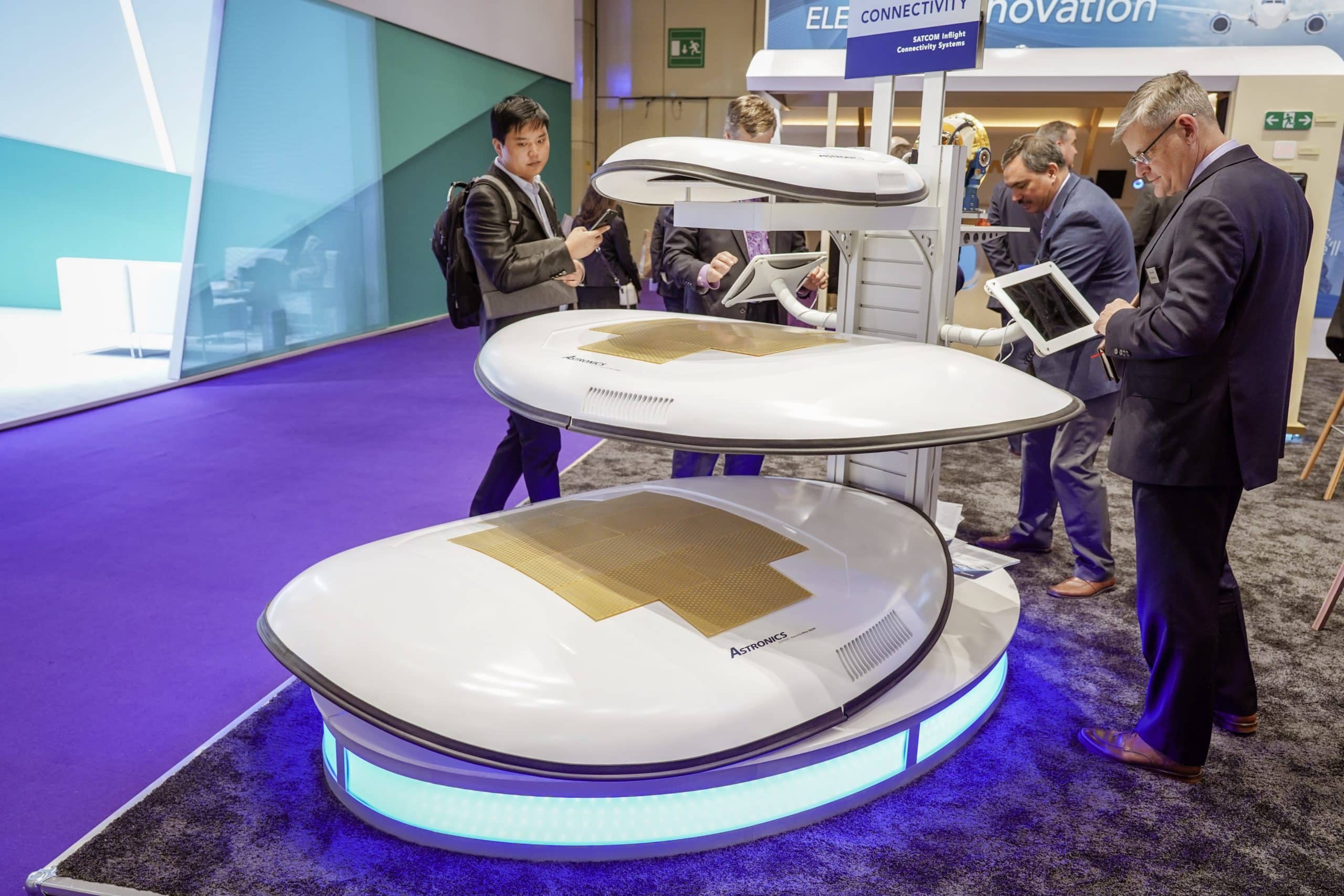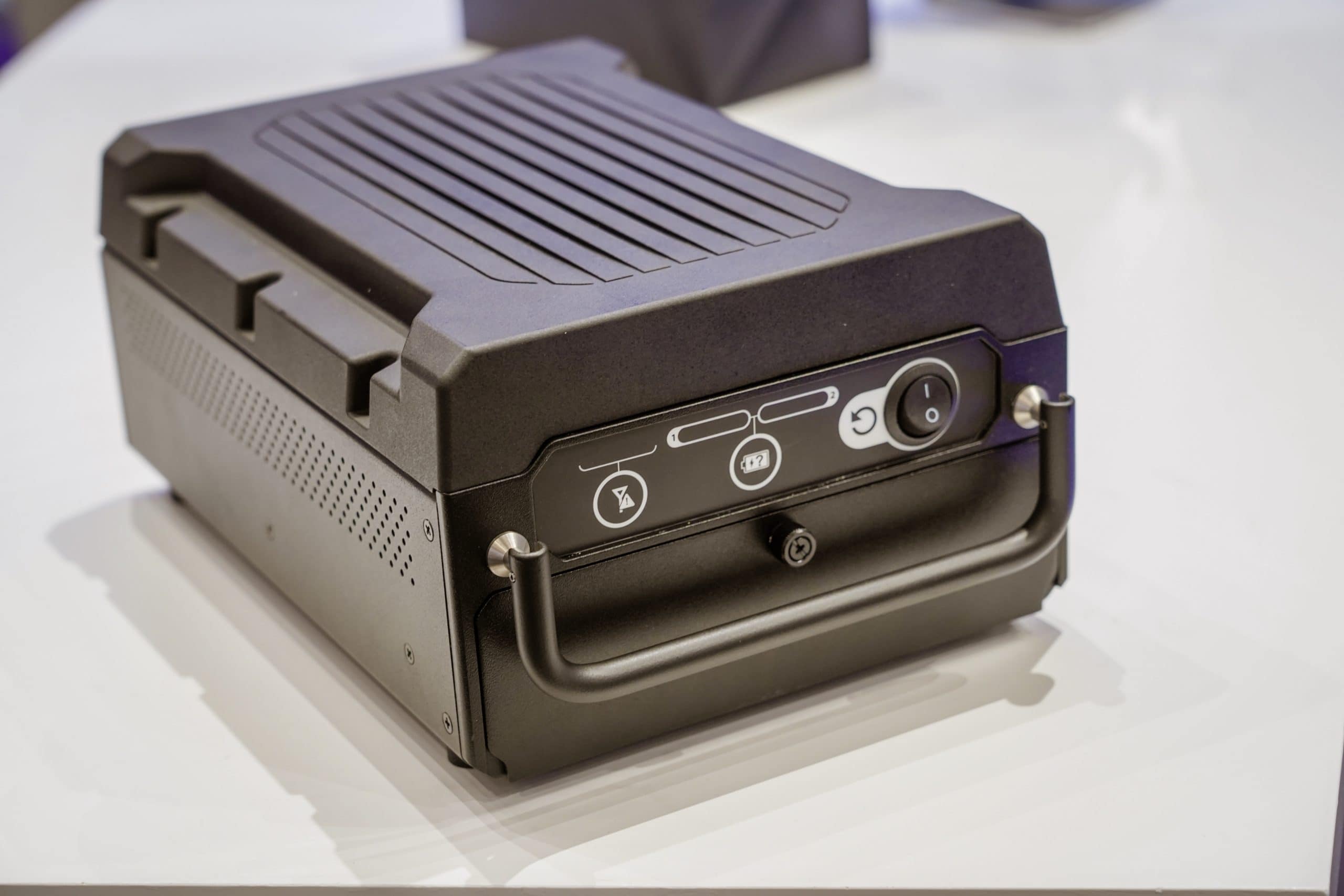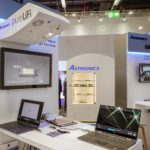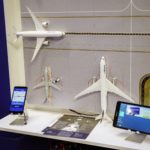An Array of Connectivity Solutions at Astronics
Share

Astronics showcased a slew of connectivity products at Aircraft Interiors Expo (AIX) today including its electronically steered array antenna, an updated portable IFE system, as well as its exploration of Li-Fi technology for gatelink communications.
ELECTRONICALLY STEERED ARRAY ANTENNAS
Astronics has introduced its electronically steered array antennas, developed in partnership with Phasor, which it is showing at Aircraft Interiors Expo (AIX) for the first time. The antennas are unique in that they are solid state (without moving parts) and have one array for transmitting and receiving signals for mixed satellite networks.
Like many antenna manufacturers, Astronics AeroSat also sees the need to help airlines future-proof their products for the changing landscape of in-flight connectivity. “We want to design it for maximum flexibility,” says Matthew Harrah, president of Astronics Aerosat, explaining that the antenna can be adapted to GEO and upcoming MEO and LEO networks.
Astronics AeroSat has released three sizes of the antenna, the E-200, E-600 and E-1000, each which averages 3.5 inches in height.

SIERRA, PORTABLE IFE SYSTEM
Astronics also showcased Sierra, its new portable IFE system, which is based on its previous Encompass all-in-one stand-alone solution. “We’ve replicated what installed IFE systems can do,” says Alan Manns, director of Business Development, Astronics CSC.
Manns says two to three of the portable IFE systems can serve an entire aircraft, with each supporting 70-100 passengers simultaneously streaming content. Additionally, Sierra has a pause function for passenger service announcements and turns on and off automatically to enable the transmission of data when the aircraft is at the gate.
LI-FI FOR STREAMING AND GATELINK COMMUNICATIONS
Astronics also demonstrated a new application for Li-Fi, which is the transfer of data via light. Mark Schwartz, vice-president of pdt, an Astronics company, said one of the benefits of Li-Fi is that it offers unlimited bandwidth (unlike radio-frequency-based Wi-Fi, which can only work within a limited spectrum).
While Astronics previously achieved a 14 Mbps-streaming rate for HD quality video using Li-Fi, in this scenario, passengers would have to keep their reading light on in order to keep a video playing. Now, Astronics has achieved a 60-Mbps streaming rate for 4K video, and because the technology is infrared-based, there’s no need to keep the light on.
“The tech has matured. It’s just a matter of getting it onto aircraft now,” said Schwartz. “We’re showing the technology to the industry to see what the next application might be.”




